How to Fertilize Zucchini: Expert Techniques for Maximum Growth
- March 1, 2024
- 0 comment
Master How to Fertilize Zucchini for peak growth. Uncover expert tips for a lush harvest. Maximize your zucchini’s potential with essential fertilization strategies. Growing zucchinis can be incredibly rewarding, especially when you get to enjoy the fruits of your labor. However, achieving maximum growth and health for your zucchini plants involves more than just planting and watering. Fertilization plays a crucial role in the development of strong, productive plants.

In this guide, we’ll explore expert techniques for fertilizing your zucchini, ensuring you have all the knowledge needed to nurture your garden effectively. From understanding the right type of fertilizer to use, to knowing the perfect timing for application, we’ve got you covered. Let’s dive into the essentials of zucchini fertilization and get your garden flourishing.
Table of Contents
- Understanding Zucchini Nutritional Needs
- Choosing the Right Fertilizer
- Soil Preparation and Testing
- Plant Spacing and Density Considerations
- Step-by-Step Guides on How to Fertilize Zucchini
- Watering in Relation to Fertilization
- Pruning Techniques for Maximum Yield
- Monitoring and Adjusting Fertilization Practices
- Common Fertilization Mistakes to Avoid
- Conclusion
- FAQs
Understanding Zucchini Nutritional Needs
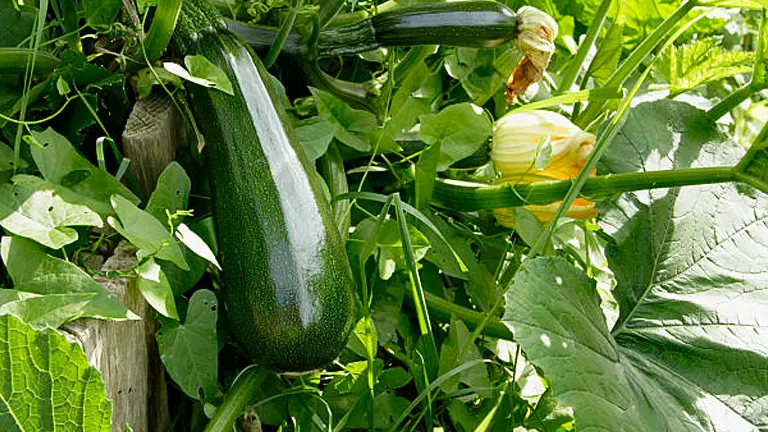
Zucchini (Cucurbita pepo), a member of the squash family, is a prolific vegetable plant known for its rapid growth and high yield. To sustain this vigorous development, zucchini plants demand a comprehensive nutrient regime, focusing primarily on nitrogen (N), phosphorus (P), and potassium (K). These macronutrients play pivotal roles in different physiological processes within the plant, influencing everything from leaf coloration to fruit quality.
- Nitrogen (N): Nitrogen is the cornerstone of chlorophyll production, the green pigment responsible for photosynthesis. It is also a key component of amino acids, the building blocks of proteins. For zucchini plants, adequate nitrogen levels ensure the development of dense, green foliage, which is crucial for photosynthesis and energy production. However, an excess of nitrogen can lead to lush foliage at the expense of fruit development.
- Phosphorus (P): This nutrient is vital for the energy transfer within the plant, contributing to root development and the blooming process. Phosphorus plays a significant role in the transformation of solar energy into chemical energy, aiding in the plant’s metabolic processes. It also enhances the quality of the zucchini crop by supporting flower formation and seed production.
- Potassium (K): Potassium regulates the plant’s water balance, enzyme activation, and photosynthesis efficiency. It strengthens the plant’s overall health, improving disease resistance and drought tolerance. Potassium is essential for the synthesis of proteins and starches, contributing to the size and quality of the zucchini fruits.
A balanced fertilization strategy is crucial for meeting the zucchini plant’s nutritional requirements. The optimal N-P-K ratio for zucchini is generally around 2-1-3, though this can vary based on soil conditions and plant growth stage. Regular soil testing can provide a precise assessment of nutrient levels, enabling tailored fertilization practices.
Nutrient Deficiency Symptoms in Zucchini Plants
| Nutrient | Deficiency Symptoms | Scientific Insight | Management Recommendations |
|---|---|---|---|
| Nitrogen (N) | Yellowing of older leaves, starting from the bottom of the plant. Reduced growth rate and stunted plants. | Nitrogen is integral to amino acids and chlorophyll. Deficiency reduces chlorophyll synthesis, impacting photosynthesis. | Apply a balanced, nitrogen-rich fertilizer. Consider soil amendments with organic matter to improve nitrogen availability. |
| Phosphorus (P) | Dark, dull, or bluish-green leaves. Delayed maturity and flowering. Stunted root growth. | Phosphorus is crucial for ATP formation, affecting energy transfer and root development. Deficient plants show reduced phosphatase activity, impacting energy metabolism. | Use phosphorus-enriched fertilizers. Bone meal is an organic option that provides slow-release phosphorus. |
| Potassium (K) | Older leaves show chlorosis at the margins, progressing to necrosis. Weak stems and small fruits. | Potassium regulates stomatal opening, affecting water use efficiency and photosynthesis. Deficiency decreases photosynthetic rate and reduces plant resistance to stressors. | Potassium sulfate or potassium chloride can be applied to replenish potassium levels. Ensure balanced application to avoid antagonism with other nutrients. |
| Calcium (Ca) | New leaves are distorted or irregularly shaped. Blossom end rot in fruits. | Calcium is essential for cell wall structure and membrane function. Deficiency leads to poor cell wall integrity, affecting leaf and fruit development. | Apply gypsum or lime to increase soil calcium levels. Foliar sprays can provide immediate relief for plants showing deficiency symptoms. |
| Magnesium (Mg) | Interveinal chlorosis on older leaves, often turning reddish-purple. | Magnesium is the central atom in the chlorophyll molecule and is crucial for enzyme activation. Deficiency reduces chlorophyll content, affecting photosynthesis. | Epsom salts (magnesium sulfate) can be applied either to the soil or as a foliar spray to correct magnesium deficiency. |
| Sulfur (S) | Younger leaves turn pale yellow or light green, unlike nitrogen deficiency which affects older leaves first. | Sulfur is a component of certain amino acids and vitamins, playing a role in chlorophyll formation and protein synthesis. | Incorporate sulfur through the application of gypsum or elemental sulfur. Ammonium sulfate can also be used to address sulfur and nitrogen deficiencies simultaneously. |
Note: It’s crucial for gardeners to conduct regular soil and tissue tests to accurately diagnose nutrient deficiencies and tailor their management practices accordingly. Adjusting pH levels is often necessary to improve nutrient availability, especially for micronutrients that become more available in certain pH ranges.
Choosing the Right Fertilizer
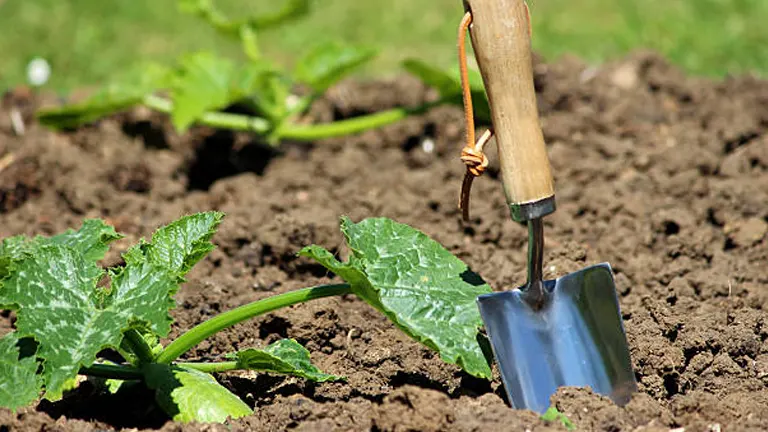
Selecting an appropriate fertilizer is crucial for the successful cultivation of zucchini, as it influences not only the health and yield of the plants but also the long-term fertility of the soil. The debate between organic and synthetic fertilizers is a significant consideration for gardeners aiming for sustainable and efficient gardening practices.
- Organic Fertilizers: These products are made from natural materials, including plant residues, animal manure, and minerals. They improve soil structure, enhance microbial life, and release nutrients gradually, in sync with plant needs. Organic fertilizers, such as compost, manure, or bone meal, are not only nutrient sources but also soil conditioners, enhancing water retention and aeration.
- Synthetic Fertilizers: Manufactured from chemical compounds, synthetic fertilizers provide nutrients in a more concentrated and immediately available form. They are designed for quick uptake by plants, offering a rapid solution to nutrient deficiencies. However, their excessive use can lead to nutrient leaching, soil degradation, and environmental pollution.
- Balanced NPK Ratio: For zucchini, a balanced NPK ratio is vital. The ideal ratio typically falls within 5-10-10 or 10-10-10, offering a blend of nitrogen (N) for foliage growth, phosphorus (P) for root and flower development, and potassium (K) for fruit formation and overall health.
Comparative Analysis of Fertilizer Types for Zucchini Cultivation
| Aspect | Organic Fertilizers | Synthetic Fertilizers |
|---|---|---|
| Composition | Derived from natural materials like compost, manure, bone meal, and seaweed. | Manufactured from chemical processes, containing specific ratios of NPK and other nutrients. |
| NPK Ratio | Varied, dependent on the source material. Generally lower and more balanced. | Precisely formulated, often higher and targeted (e.g., 5-10-10, 10-10-10). |
| Nutrient Release | Slow and dependent on soil conditions and microbial activity. | Quick and controlled by the chemical formulation. |
| Soil Health | Improves soil structure, increases organic matter, and supports microbial diversity. | Can lead to soil acidification and decrease in microbial diversity with excessive use. |
| Nutrient Uptake Efficiency | Enhanced over time due to improved soil health and root development. | Immediate but can decrease over time due to potential negative impacts on soil health. |
| Environmental Impact | Minimal to low; enhances soil carbon sequestration, reduces greenhouse gas emissions. | High; potential for nitrate leaching, eutrophication, and greenhouse gas emissions from production and use. |
| Scientific Insight | Research indicates organic fertilizers can increase soil microbial biomass by 20-40%, enhancing nutrient cycling and plant health. | Studies suggest that synthetic fertilizer application can result in up to 50% of nitrogen being leached or runoff, contributing to water pollution. |
| Sustainability | Promotes sustainable agriculture practices by recycling organic waste and reducing dependency on non-renewable resources. | Relies on non-renewable fossil fuels for production, contributing to sustainability challenges. |
| Best Use Cases | Ideal for long-term soil health and sustainability-focused gardening. Requires planning for slower nutrient release. | Suitable for addressing immediate nutrient deficiencies or boosting growth in specific growth stages. |
The optimal approach to fertilizing zucchini involves a balanced integration of organic and synthetic fertilizers, tailored through soil testing to meet the plant’s immediate nutrient demands while fostering long-term soil vitality and minimizing environmental impact. This strategy ensures healthy plant growth and sustainable gardening practices.
Soil Preparation and Testing

Understanding the composition and condition of your garden soil is paramount for the successful cultivation of zucchini. Soil testing not only reveals the current nutrient status and pH level but also identifies potential deficiencies or toxicities that could impede plant growth. This knowledge enables gardeners to tailor their soil amendment strategies effectively, ensuring that zucchini plants receive the optimal nutrient balance for vigorous growth.
Why Soil Testing is Essential?
- Nutrient Content: Identifies levels of key nutrients like nitrogen (N), phosphorus (P), potassium (K), and other trace elements essential for zucchini growth.
- pH Level: Determines soil acidity or alkalinity, which affects nutrient availability to plants. Zucchini prefer a slightly acidic to neutral pH (6.0 to 7.0).
- Soil Texture and Structure: Affects water retention and drainage, influencing how well nutrients are held in the soil and available to plant roots.
How to Test Your Soil
- Collecting Soil Samples: Take samples from several locations in your garden to get an average soil composition. Samples should be taken from a depth of 4-6 inches.
- Choosing a Testing Method: Utilize local extension services for a comprehensive analysis or an at-home testing kit for a basic understanding of your soil’s pH and nutrient levels.
- Interpreting Results: Use the test results to identify what amendments your soil needs. This might include adding organic matter to improve soil structure or specific fertilizers to address nutrient deficiencies.
Soil Test Parameters and Amendments for Zucchini
| Parameter | Ideal Range for Zucchini | If Below Range | If Above Range |
|---|---|---|---|
| Nitrogen (N) | 20-30 ppm | Apply a high-N fertilizer or incorporate composted manure. | Reduce N fertilization; increase compost to enhance microbial activity. |
| Phosphorus (P) | 30-50 ppm | Add bone meal or rock phosphate. | Use P-free fertilizers; grow P-accumulating cover crops. |
| Potassium (K) | 200-250 ppm | Apply potash or compost with banana peels. | Limit K application; adjust with K-free fertilizers. |
| pH Level | 6.0-7.0 | Add lime to raise pH, or sulfur to lower pH. | Adjust pH with sulfur (to lower) or lime (to raise) based on needs. |
Unique Insights:
- Nutrient Uptake Efficiency: Soil texture and structure significantly affect nutrient uptake. Loamy soil, rich in organic matter, optimizes nutrient availability and root penetration.
- Microbial Activity: The presence of beneficial microbes in soil can enhance nutrient mineralization, making them more accessible to plants. Organic amendments like compost increase microbial diversity and activity.
- Environmental Considerations: Responsible soil management, including precise nutrient application based on soil test results, minimizes the risk of runoff and nutrient leaching, protecting local waterways.
Plant Spacing and Density Considerations
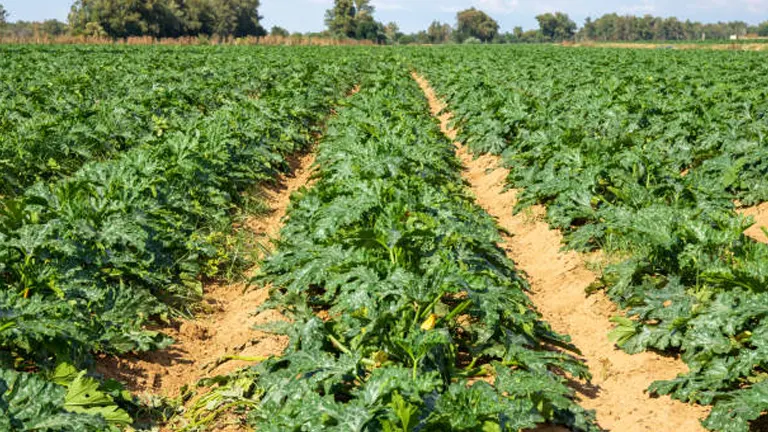
Understanding the spatial needs of zucchini plants is critical for maximizing growth, yield, and plant health in both medium and high-density gardens. Proper spacing facilitates optimal air circulation and sunlight exposure, crucial factors in minimizing disease incidence and pest infestations. Additionally, the strategic arrangement of plants affects resource competition, influencing water, nutrient uptake, and overall garden productivity.
The Science of Spacing
Zucchini plants, being vigorous growers, require sufficient space not just for their expansive foliage but also to accommodate their root systems, which spread extensively to absorb water and nutrients. The space between plants and rows affects microclimatic conditions around each plant, including light intensity, humidity levels, and air movement, which in turn influence photosynthesis rates, transpiration, and susceptibility to fungal diseases.
Spacing Guidelines and Their Impacts
| Garden Density | Plant Spacing (inches) | Row Spacing (feet) | Optimal Air Circulation | Sunlight Exposure | Disease and Pest Risk | Nutrient and Water Competition | Yield Potential |
|---|---|---|---|---|---|---|---|
| Medium Density | 24-36 | 3-4 | High | High | Lowered | Moderate | High |
| High Density | 18-24 | 2-3 | Moderate | Moderate to Low | Increased | High | Very High |
Additional Insights:
- Optimal Air Circulation: Adequate spacing allows for better airflow around plants, reducing humidity levels that can lead to fungal diseases.
- Sunlight Exposure: Ensures each plant receives enough light for optimal growth and fruit development, critical in densely planted areas where shadowing can affect lower leaves.
- Disease and Pest Risk: Closely spaced plants may create microclimates that favor the development of certain pests and diseases. Proper spacing helps mitigate this risk.
- Nutrient and Water Competition: In medium-density settings, plants have better access to soil resources, reducing competition. High-density gardens might require more meticulous water and nutrient management to support each plant adequately.
- Yield Potential: While high-density planting can lead to a greater yield per square foot, it requires careful management of resources and conditions to prevent stress and disease, which could otherwise lower overall productivity.
Step-by-Step Guides on How to Fertilize Zucchini
Step 1: Soil Testing and Preparation
- Conduct a Soil Test: Before planting, test your soil to determine its nutrient content and pH level. This step is crucial for understanding what amendments your soil may need.
- Amend the Soil: Based on your soil test results, amend your soil to reach the ideal pH for zucchini (6.0 to 7.0). If necessary, add lime to increase the pH or sulfur to decrease it.
- Incorporate Organic Matter: Improve soil structure and fertility by mixing in well-composted organic matter. This will help retain moisture and nutrients in the soil.
Step 2: Choosing the Right Fertilizer
- Select a Fertilizer: Choose a balanced fertilizer with an NPK ratio suitable for zucchini, such as 5-10-10 or 10-10-10. Consider whether you prefer organic or synthetic fertilizers based on your gardening practices.
- Consider Micronutrients: If your soil test indicates a deficiency in micronutrients (like magnesium, calcium, or boron), select a fertilizer or amendments that address these needs.
Step 3: Initial Fertilization
- Fertilize at Planting: When planting your zucchini, apply a starter fertilizer to help establish the plants. Mix the fertilizer into the soil at the bottom of each planting hole or row according to the package instructions.
- Water Well: After planting and fertilizing, water your zucchini plants thoroughly to help disperse the nutrients in the soil around the roots.
Step 4: Follow-up Fertilization
- Monitor Plant Growth: Keep an eye on your zucchini plants as they grow. Look for signs of nutrient deficiency (such as yellowing leaves for nitrogen deficiency) and overall plant health.
- Apply Additional Fertilizer: Once your plants are established and begin to flower, apply a side dressing of fertilizer around the base of each plant, then water thoroughly. This boosts fruit production and overall plant vigor.
- Use Liquid Fertilizers for Quick Boosts: If your plants need a quick nutrient boost during the growing season, consider applying a diluted liquid fertilizer according to package directions.
Step 5: Managing Soil and Plant Health
- Regular Soil Testing: Conduct soil tests annually or as needed to monitor nutrient levels and pH, adjusting your fertilization practices accordingly.
- Observe and Adjust: Watch how your plants respond to fertilization and be prepared to adjust your practices. Over-fertilization can lead to lush foliage with little fruit, while under-fertilization can result in poor growth and low yield.
- Practice Crop Rotation: To maintain soil health and reduce pest and disease pressure, rotate your zucchini and other crops according to a planned schedule.
Step 6: End-of-Season Care
- Post-Harvest Fertilization: After the final harvest, consider applying a light layer of compost or a cover crop to restore nutrients and protect the soil over the winter.
Additional Tips:
- Watering Practices: Zucchini requires consistent moisture for optimal growth. Water plants deeply, especially after fertilizing, to help nutrients reach the root zone.
- Mulching: Apply organic mulch around your zucchini plants to conserve moisture, regulate soil temperature, and reduce weed competition.
Watering in Relation to Fertilization
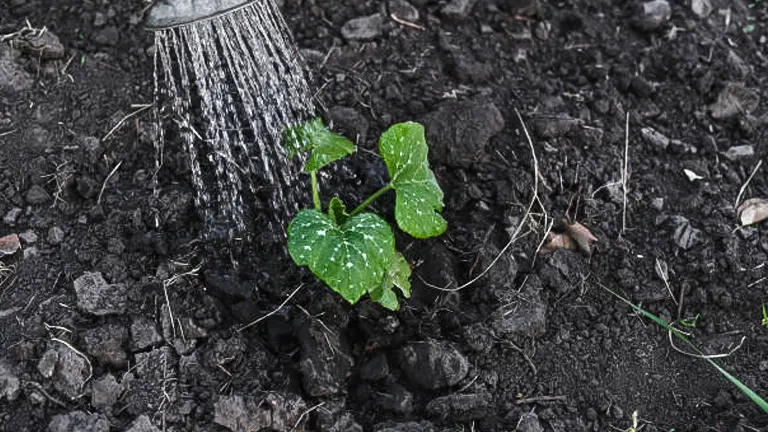
The relationship between watering and fertilization is symbiotic, with each influencing the efficacy of the other. Understanding this relationship is key to maintaining a balanced environment that promotes optimal nutrient uptake.
The Science of Water and Nutrient Interaction
- Nutrient Solubility: Most nutrients are taken up by plants in their dissolved form. Water dissolves these nutrients, making them accessible to plant roots. Insufficient watering can lead to lower solubility of nutrients, reducing their availability.
- Soil Moisture and Nutrient Transport: Soil moisture levels directly affect the movement of nutrients to the roots. Water acts as a medium, allowing nutrients to traverse through the soil matrix to the root zone where they can be absorbed.
- Impact of Over-Watering: Excessive watering can cause nutrients to leach beyond the reach of plant roots, particularly in sandy soils with poor nutrient-holding capacity. This not only wastes fertilizer but also can contribute to nutrient runoff, potentially harming the environment.
- Impact of Under-Watering: Conversely, under-watering can lead to a concentration of salts in the soil, which can harm plant roots and inhibit their ability to take up water and nutrients, leading to stress and reduced growth.
Best Watering Practices for Fertilized Gardens
- Establish a Regular Watering Schedule: Water your zucchini plants early in the morning to reduce evaporation losses and allow water to penetrate deeply into the soil, reaching the root zone.
- Adjust Watering Based on Conditions: Be mindful of environmental conditions such as temperature, humidity, and wind, which can affect soil moisture levels. Adjust your watering frequency accordingly to maintain consistent soil moisture.
- Use Soil Moisture Meters: Consider using a soil moisture meter to more accurately gauge the soil’s moisture level at root depth, ensuring you’re neither over nor under-watering.
- Mulching: Apply a layer of organic mulch around your plants. Mulch helps retain soil moisture, reduces temperature fluctuations, and minimizes evaporation, creating a more stable environment for nutrient uptake.
- Implement Efficient Watering Systems: Drip irrigation or soaker hoses target water directly to the root zone, minimizing waste and reducing the risk of leaching caused by over-watering. These systems can be particularly beneficial in maintaining optimal soil moisture levels for fertilized plants.
Monitoring and Adjusting
- Observation is Key: Regularly check the condition of your plants and the soil. Signs of over-watering include yellowing leaves and soggy soil, while under-watered plants may wilt or have dry, crumbly soil around their base.
- Adjust Fertilization Post-Watering Adjustments: If you’ve had to significantly alter your watering practices due to changing weather conditions, consider re-evaluating your fertilization schedule. Plants under water stress may not be able to utilize nutrients as efficiently, necessitating adjustments in fertilizer application.
Pruning Techniques for Maximum Yield
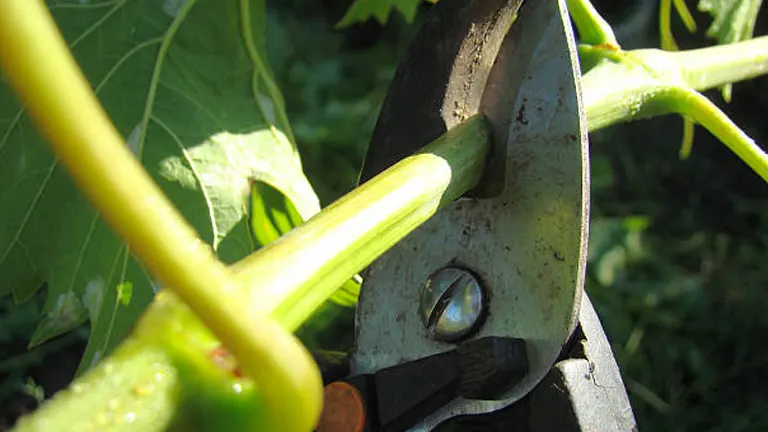
Pruning is a vital aspect of zucchini cultivation, often overlooked by many gardeners. Proper pruning not only enhances plant health and productivity but also improves air circulation and sunlight penetration, which are crucial for reducing disease incidence and promoting even ripening of fruits.
To prune zucchini plants, focus on removing excess leaves and any unhealthy or damaged foliage. Start by identifying the oldest leaves at the base of the plant, which are more likely to harbor pests and diseases. Pruning these leaves can help improve air flow around the base, reducing moisture-related issues such as mildew.
Additionally, thinning out the middle of the plant by selectively removing some leaves can increase sunlight exposure to the developing fruits, leading to better growth and ripening. Always use clean, sharp pruning shears to make clean cuts close to the stem, and avoid over-pruning, as this can stress the plant and reduce yield.
Monitoring and Adjusting Fertilization Practices
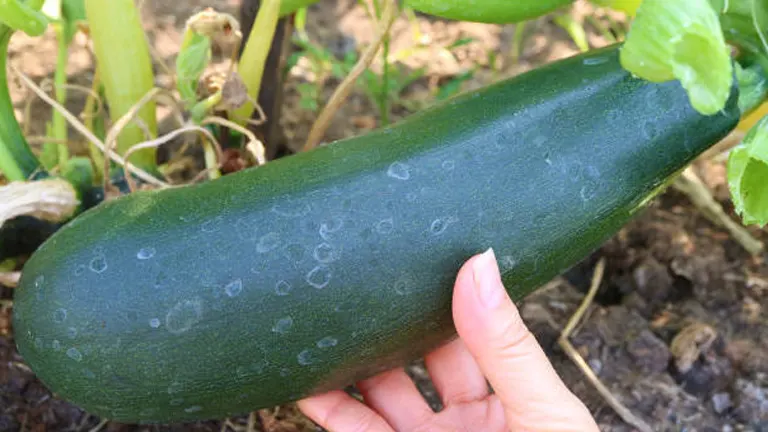
Successful zucchini cultivation hinges on the gardener’s ability to interpret plant signals and environmental cues, making informed adjustments to fertilization practices for optimal plant health and productivity. Here’s an enhanced approach to monitoring and adjusting your fertilization strategy:
Key Signs of Nutrient Imbalance:
- Nitrogen Deficiency: Yellowing of older leaves and stunted growth indicate a need for more nitrogen. Consider applying a balanced fertilizer with a higher nitrogen content.
- Phosphorus Deficiency: Poor root development and delayed flowering suggest a lack of phosphorus. A fertilizer with a higher phosphorus ratio may be required.
- Potassium Deficiency: Symptoms include brown scorching and curling of leaf tips, and a general weakness in the plant. Applying a potassium-rich fertilizer can help address these issues.
- Fertilizer Burn: Indicated by browned leaf edges and wilting, signaling an excess of fertilizer. Immediate action should include watering to help flush out excess nutrients and adjusting future application rates to prevent recurrence.
Environmental Impact on Nutrient Uptake:
- Weather Conditions: High temperatures and intense sunlight can increase plant metabolism and nutrient demand, necessitating more frequent fertilization. Conversely, cooler, cloudier conditions may slow nutrient uptake, requiring adjustments to fertilization frequency.
- Soil Moisture Levels: Consistent soil moisture is critical for nutrient solubilization and uptake. Dry conditions can hinder nutrient absorption, while overly wet conditions can lead to nutrient leaching. Implement a balanced watering schedule that maintains even soil moisture, particularly after fertilizing.
Adaptive Fertilization Strategies:
- Soil Testing: Regular soil tests can provide valuable insights into the current nutrient status and pH level of your soil, guiding precise fertilizer adjustments.
- Fertilizer Types: Alternate between different types of fertilizers (organic vs. synthetic) or adjust NPK ratios based on the plant’s growth stage and observed nutrient needs.
- Application Techniques: Experiment with different fertilizer application methods (e.g., side dressing, foliar feeding) to find the most effective approach for your garden conditions and zucchini plants.
Implementing Adjustments:
- Start with small adjustments: Overcorrection can lead to further imbalances. Begin with modest changes to fertilizer types, amounts, or application methods.
- Observe plant response: After making adjustments, closely monitor plant health and growth, looking for improvements or further signs of distress.
- Maintain records: Keep detailed records of your fertilization practices, plant responses, and environmental conditions to inform future cultivation strategies.
Common Fertilization Mistakes to Avoid
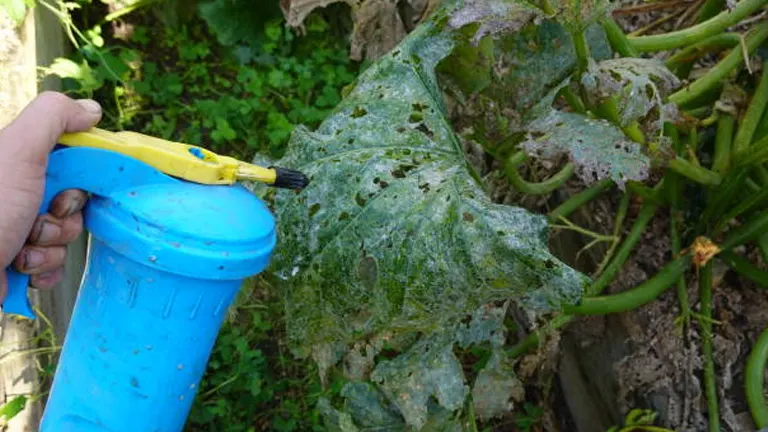
Proper fertilization is crucial for the success of zucchini plants, but common mistakes can jeopardize their health and productivity. Understanding these pitfalls and how to avoid them can make a significant difference in your gardening outcomes.
Over-Fertilization: The Balance Challenge
- Issue: Excessive nitrogen leads to rapid foliage growth at the expense of fruiting, while too much of any nutrient can disrupt soil chemistry, causing salt buildup that damages soil life and plant roots.
- Solution: Use a balanced, slow-release fertilizer and adhere strictly to recommended application rates. Consider soil testing to tailor your fertilization strategy to the exact needs of your soil and plants.
Under-Fertilization: The Growth Barrier
- Issue: Insufficient nutrients result in stunted growth, poor flowering, and reduced yields.
- Solution: Monitor plant growth and signs of nutrient deficiency closely. Adjust fertilization practices based on observable plant needs and soil test recommendations.
Ignoring Soil pH: The Nutrient Availability Factor
- Issue: Zucchini thrives in slightly acidic to neutral pH levels. Soil pH outside the 6.0-7.0 range can lock nutrients away, making them unavailable to plants, regardless of fertilization efforts.
- Solution: Regularly test soil pH and adjust using lime (to increase pH) or sulfur (to decrease pH), following guidelines based on test results to ensure optimal nutrient availability.
Neglecting Organic Matter: The Soil Health Oversight
- Issue: Failing to incorporate organic matter into the soil can lead to poor soil structure, inadequate water retention, and limited nutrient availability.
- Solution: Enrich the soil with compost, aged manure, or green cover crops annually to boost organic matter content. This improves soil fertility, structure, and moisture management, enhancing plant growth and resilience.
Misunderstanding Fertilizer Types and Timing
- Issue: Choosing the wrong type of fertilizer or applying at incorrect times can either burn plants or fail to support their growth stages effectively.
- Solution: Opt for fertilizers suited to growth stages—starter fertilizers at planting, balanced fertilizers for vegetative growth, and potassium-rich fertilizers for fruiting. Time applications to coincide with key growth phases for maximum benefit.
Watering Practices in Relation to Fertilization
- Issue: Improper watering can exacerbate fertilization issues, either by causing nutrient leaching or by allowing salts to concentrate in the soil, stressing plants.
- Solution: Implement a consistent watering schedule that keeps the soil moist but not waterlogged, especially after fertilizing, to help dissolve and distribute nutrients effectively.
Related Post
- How to Fertilize Avocado Tree
- How to Fertilize Lemon Trees
- How to Fertilize a Mango Tree Effectively
- How to Fertilize a Banana Plant
- How to Fertilize Apple Trees
- How to Fertilize Bell Peppers
- How to Fertilize Sweet Corn for Optimal Growth
Conclusion
Fertilizing zucchini with expert techniques is key to achieving maximum growth and bountiful harvests. By understanding the nutritional needs of zucchini, choosing the right fertilizer, preparing the soil, and adopting proper spacing, pruning, and watering practices, you can create the optimal conditions for your zucchini plants to thrive. Remember, successful gardening is as much about observation and adaptation as it is about following best practices. With patience and attention to your plants’ needs, you can enjoy the rewards of a flourishing zucchini garden.
FAQs
- What innovative methods can enhance zucchini growth when using organic fertilizers?
To boost zucchini growth with organic fertilizers, consider incorporating compost tea or worm castings into your routine. These methods provide a rich source of microorganisms that enhance nutrient availability and root health, leading to more vigorous plant growth. - Can mulching affect the fertilization process of zucchini plants?
Yes, mulching can significantly impact fertilization by maintaining soil moisture, regulating temperature, and reducing weed competition. Organic mulches, like straw or wood chips, gradually break down, adding nutrients back into the soil and improving its structure, which can enhance the effectiveness of fertilizers. - How do cover crops contribute to the nutrient management of zucchini?
Growing cover crops before planting zucchini can improve soil fertility and structure. Leguminous cover crops, such as clover or vetch, fix atmospheric nitrogen into the soil, reducing the need for synthetic nitrogen fertilizers and promoting a healthier root environment for zucchini plants. - Is there a role for biochar in zucchini fertilization strategies?
Incorporating biochar into the soil can significantly benefit zucchini fertilization by enhancing soil water retention, providing a habitat for beneficial soil microbes, and improving nutrient retention. This leads to more efficient use of fertilizers and can result in better plant growth and yield. - How does foliar feeding impact zucchini plant growth compared to traditional soil fertilization?
Foliar feeding, or applying liquid fertilizer directly to zucchini leaves, can offer a quick nutrient boost, especially for addressing micronutrient deficiencies. It complements soil fertilization by allowing plants to absorb nutrients directly through their leaves, potentially enhancing growth and productivity in critical growth stages. - What specific micronutrients are often overlooked but crucial for zucchini fertilization?
While nitrogen, phosphorus, and potassium are the mainstays of fertilization, micronutrients like magnesium, calcium, and boron are also vital. They support plant structure, chlorophyll production, and fruit development, making their inclusion in a fertilization program key for maximum growth. - Can mycorrhizal fungi be part of an effective zucchini fertilization plan?
Absolutely. Mycorrhizal fungi form symbiotic relationships with zucchini roots, improving water and nutrient uptake, particularly phosphorus. Incorporating mycorrhizae into your fertilization plan can enhance nutrient efficiency, reduce stress, and improve yield. - What advanced soil amendments are recommended for correcting pH imbalances in zucchini cultivation?
For acidic soils, liming materials like calcitic or dolomitic lime can raise the pH, making nutrients more available to zucchini plants. In alkaline soils, sulfur or aluminum sulfate can lower the pH. Adjusting soil pH based on soil test recommendations ensures that fertilizers are effective, and nutrients are accessible to the plants.
With these insights on fertilizing zucchini, you’re now equipped to nurture your plants from seedling to harvest. Remember, a balanced approach to nutrition is key to unlocking the full potential of your zucchini garden. Here’s to a season of lush growth and abundant harvests!

Benjamin Brooks
Forestry AuthorGreetings! I'm Benjamin Brooks, and my journey over the past 15 years has revolved around the fascinating realms of content creation, expertise in snow clearing, and the intricate world of lumberjacking and landscaping. What began as a simple curiosity about the natural world and heavy machinery has evolved into a passionate profession where my love for crafting words intertwines seamlessly with my lumberjacking and garden skills.













Leave your comment